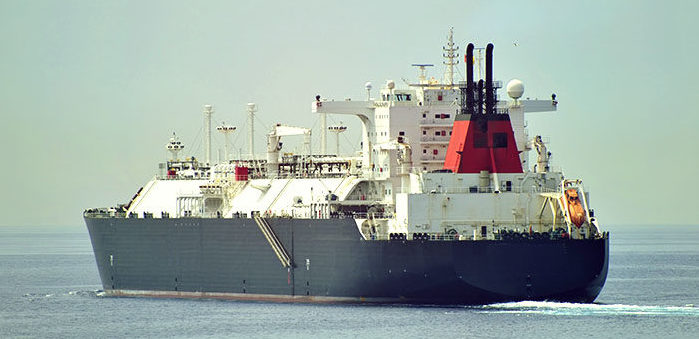SIGTTO has issued a paper to inform and advise the owners and operators of LNG carriers about the issues surrounding rollover.
“Rollover” refers to the rapid release of LNG vapour that can occur as a result of the spontaneous mixing of layers of different densities of LNG in a storage or cargo tank. A pre-condition for rollover is that stratification has occurred, ie the existence in the tank of two separate layers of LNG of different density. The possibility of a sudden release of large amounts of vapour and the potential over-pressurisation of the tank resulting in possible damage or failure is recognised by the major design codes. EN 1473 – ”The design of onshore LNG terminals” and NFPA 59A – “Standard for the Production, Storage and Handling of LNG” both require this phenomenon to be taken into consideration when sizing relief devices. Whilst the relief valves may prevent damage to the tank, LNG vapour is not only flammable and heavier than air on release, but a valuable commodity and a potent greenhouse gas and therefore venting should be avoided whenever possible.
Figure below shows an LNG tank without stratification. Methane evaporates from the surface, which cools due to loss of latent heat, causing the density of the surface layer to increase and the liquid to sink. Heat inleak through the tank bottom and wall insulation is sufficient to warm the lower side layers and a convection current is set up, ensuring mixing of the liquid. The lighter fractions will boil off first, resulting in the density of the remaining liquid gradually increasing, a process known as “weathering” or “aging”.
Rollover can only occur if stratification has taken place in the LNG. Stratification of LNG can occur when an LNG tank is filled with LNG of different densities. Stratification will occur readily if the LNG being introduced into the tank is either denser than that of the “heel” remaining in the tank and filling is at the bottom, or if the LNG introduced is lighter than the heel and filling is into the top of the tank. Studies undertaken in Japan in the late 1970s showed that a density difference of 1 kg/m3 (0.001 tonne/m3) could result in stratification if incoming LNG was introduced at a very slow rate.
Next figure shows a tank where stable stratification has taken place caused by filling a storage tank with liquids of different densities, the higher density layer being the lower layer. There is little heat or mass transfer between the layers and each layer establishes its own convection currents. A key indicator that stratification has occurred is a noticeable reduction in the normal boil-off rate.
 Heat is lost from the upper layer by evaporation, but because of the density difference and very low thermal conductivity of LNG there is very little heat transfer from the lower layer to the upper layer. Instead, the heat, which is absorbed by the lower layer through the tank wall and floor, causes a rise in temperature and a decrease of density of the lower layer. When the densities are approximately equal, the lower superheated layer will rise through the upper layer, releasing its superheat and thereby generating large volumes of boil-off in a short period; this is rollover.
Heat is lost from the upper layer by evaporation, but because of the density difference and very low thermal conductivity of LNG there is very little heat transfer from the lower layer to the upper layer. Instead, the heat, which is absorbed by the lower layer through the tank wall and floor, causes a rise in temperature and a decrease of density of the lower layer. When the densities are approximately equal, the lower superheated layer will rise through the upper layer, releasing its superheat and thereby generating large volumes of boil-off in a short period; this is rollover.
Further details may be found by reading SIGTTO Guidance:
Source: SIGTTO
In the origin, I was forthright with you propecia before and after has changed my essence. It has become much more fun, and now I have to run. Just as it is incredible to sit.


































































To avoid rollover in most of cryogens You can use my patent of Russia NO 2027944 in which the strong and explosive rollover may be converted in the ascending natural flow from the floor up to interface,converting tank in mixer itself. Dear R. Scurlock noted me that free convection is too weak for this . (2012) Anyway, long time ago I conducted assesments and concluded ,that this my propsal has also the use in prevention of rollover. Sincerely, Vladimir Voyteshonok ,my best wishes.
Some notes on the rollover . the equality of densities of layers prior to rollover may be related to its conclusion , not to beginning . The force,giving turnover of layers,results of hydrostatic columns in tank.Side wall heating gives vertical boundary layer of complex structure because of the ribbing. Heating of bottom floor results , obviously,in natural convection with cellular (Benar) strcture. Top lauyer removes heat by boiloff and becomes colder and heavier. This picture nearly reminds cooling of countryside pond in autumn, researched by meteorologists. Critical density difference triggers the rollover, giving the enormous boil – off. After this , the same preheating can take place , giving next rollover . So, my pardons for my invasion . Sincerely, the same Vladimir